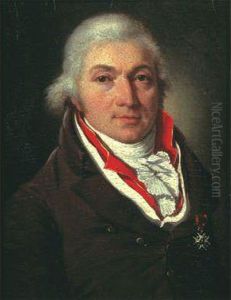Francois Sablet Paintings
Francois Sablet was a Swiss-French painter born in Morges, Switzerland, in 1745. He belonged to a family of artists, with both his brother, Jacques-Henri Sablet, and he pursuing careers in painting. Sablet's early life was marked by his family's move to France, where he and his brother were exposed to the vibrant art scene of the time. This period was crucial for the development of his artistic style, which was influenced by the French Rococo and Neoclassicism, popular movements of the 18th century.
Francois received his formal art education in Paris, where he studied under notable artists of the era. His work primarily focused on portrait painting, though he also excelled in genre scenes and historical paintings. Sablet's portraits are known for their delicate detail, sensitivity to color, and the psychological depth he brought to his depictions of sitters. His ability to capture the nuances of facial expressions and the textures of garments made his works highly sought after.
During the French Revolution, like many artists of his time, Sablet's career faced significant challenges. The political and social upheaval of the period influenced his work and the art market. Despite these challenges, Sablet continued to work and receive commissions, which included portraits of notable figures of the Revolution. His adaptability to the changing tastes and political climate of France during this tumultuous period allowed him to maintain a successful career.
In the later years of his life, Sablet's style evolved, showing an increased interest in the emotional depth of his subjects and a shift towards more somber and introspective works. This change reflected the broader shifts in European art towards Romanticism, although Sablet remained deeply rooted in the traditions of Neoclassicism.
Francois Sablet passed away in 1819, leaving behind a legacy of work that captures the complexity and transition of French art from Rococo to Neoclassicism and towards Romanticism. His portraits, in particular, remain celebrated for their technical skill, emotional depth, and the insight they provide into the characters of his subjects. Sablet's contribution to art history is significant for his ability to document the social and psychological landscapes of his time through the medium of painting.
















